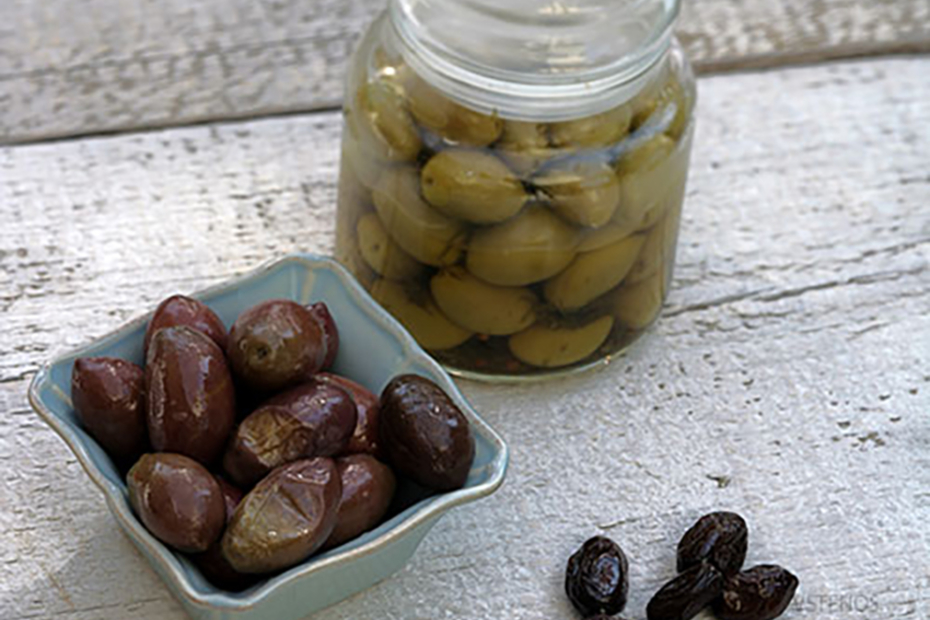Most consumers recognize Greek table olives either by their place names (Kalamata, Atalanti, Amphissa, Halkidiki, etc.) or by their curing and processing (cracked, split, salt-cured, brine-cured, etc.)
While there are dozens of “different” kinds of olives, only three main varieties are commercially important as table olives. The confusion starts here—these few types of olives just happen to come in many sizes, and from many different parts of Greece, so that they all look different and are all called by different names.
All olives change from green to black as they mature, and all are bitter and inedible unless cured. Depending on the variety and the curing method, some olives are processed unripe, or green, while others are left to mature and darken on the tree. Others still are purposely harvested late, when their skins are leathery and wrinkled.
Following is a list and brief description of Greek table olives as they are most commonly called at the market.
1. Kalamatas. The king of Greek table olives and one of the b est-known olives in the world. Kalamatas are shiny, brownish-black, tight-skinned with a characteristic “almond” shape. The Kalamata is the most highly prized black olive, and it usually slit (harakti), on two sides and preserved in vinegar and/or olive oil.
2. Olives that are recognized under the names Volos, Amphissa, Agrinio, Stylida, and Atalanti all belong to the Conservolia variety. This is the large, oval olive which accounts for more than 80 percent of all the table olive production in Greece. It starts off a rich dark green when it is unripe and changes into a whole spectrum of different colors as it matures: greenish-yellow, greenish-red, mahogany, and finally, dark, bluish-black. Conservolia is the most versatile Greek olive, processed with equal success as both a green and black olive.
3. Tsakistes. These generally belong to the Megaritiki variety and colloquially are called tsakistes, or “cracked.” Tsakistes grow mainly in Attica. They are almost always cured as a green olive, often flavored with garlic and lemon wedges.
4. Wrinkled black olives. There are many different wrinkled olives in the Greek larder. The best known is the throumba, closely associated with the island of Thassos in the northern Aegean. These are the wrinkled, reddish-brown, mealy olives that are left to ripen on the tree and are salt-cured.






